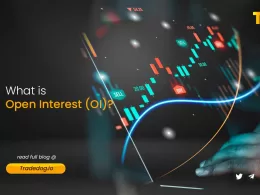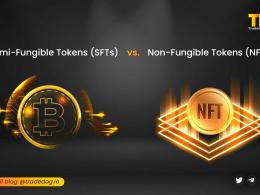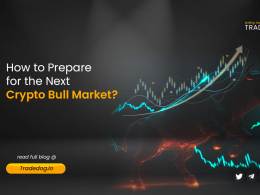The rapidly evolving crypto markets are rife with underhand tactics to manipulate the price of digital assets favoured by institutional investors. Crypto markets are known to swiftly shift in prices due to speculative demand and uncertainty which is sometimes caused by suspicious activities such as placing iceberg orders, wash trading, and forced liquidation.
Activities such as spoofing hinder the natural growth of the cryptocurrencies which causes the markets to appear highly liquid at all times. It gets increasingly tough to tell whether the prices are driven by the legitimate interest of the community or is prone to some underhand tactic that intends to eat away the liquidity of a certain crypto asset.
Today we discuss various ways a market can be manipulated by whales and how you can avoid these abrupt and volatile changes.
Hidden Orders
Source: Okex
‘Hidden orders’ or ‘iceberg orders’ are large orders that are divided into smaller limit orders for the purpose of hiding the actual order quantity. They are also referred to as ‘reserve orders’ and are usually done through automated programs. These orders are mainly used by institutional investors to buy a large number of cryptocurrencies without signalling any such move in the markets. Their entire order is masked behind a small portion which is visible on level 2 order books of exchange at any moment in time.
Disadvantages of an Iceberg Order
An Iceberg order can swiftly boost the price of an asset as its market would sense a heavy demand due to the magnitude of the order. These orders make buyers pay a lot more than the premium they would have paid in the absence of this order.
Market participants cannot detect these orders due to the fact that it is not visible in the order book
Such large orders can sway a market resulting in violent price swings as mentioned above. The average trader would have no clue as to when a swing will take place, hence it could result in potential losses due to the more informed tactics of the whale or iceberg trader.
Iceberg orders create the illusion of a liquid market and it causes other traders to take the bait and put huge trade orders, thus, directly benefiting the whale.
Wash Trading
Source: Blockchain Transparency Institute
Wash trade is a form of market manipulation wherein an investor sells and buys the same digital asset in order to create artificial, misleading activity in the market.
Wash trading serves the sole purpose of market manipulation and are used profusely for fabricating trades. A Forbes article talks about how up to 95% of trade volume in bitcoin could be a wash trading. This easier done than said because such activities in the nascent and unregulated crypto markets can be pulled off without risking any legal repercussions.
As high as 67% of trading volume was revealed to have been manipulated in 2018 according to the Wall Street Journal which was further exacerbated by a Blockchain Transparency Institute report that found the trading volume to be fake by 99% on certain exchanges. Some reports, on the other hand, found that wash trading on exchanges was reduced by 35%, but is still a stark reality related to the level of manipulation appearing on crypto exchanges.
High-Frequency Trading
High-frequency trading is also a similar trend that first originated in the traditional markets. In HFT, asset managers and investors use capable computers and high-speed internet to place thousands of trades per second. Since it is heavily used by institutions, it is not illegal to perform it. They can, however, contribute to Wash trades and are increasingly tough to monitor. Algorithmic trading and bot trading has also picked up steam in the crypto ecosystem and influences how a market should perform. Retail investors often face a lack of liquidity and violent price shifts which hampers their profits over time.
Forced Liquidation
Liquidation, as the term suggests, is the process of selling the funds for cash. The liquidation factor of a coin is determined by its ability to sell for cash easily. If it is not trading or lacks demand, its liquidity is too low, but if it is in high demand, it is highly liquid and can be traded freely for cash.
Forced liquidation is a phenomenon that appears in overleveraged markets. It is the process of conversion of assets into cash or other assets and applied to both futures and margin trading. This mechanism involves the creation of market orders to exit leveraged positions. Forced liquidation happens when the trader is unable to fulfil the margin requirements for a leveraged position. In cryptocurrency markets, a whale pumps up a certain coin’s price through Hidden orders and leverages the panic buying from other investors. Rate imbalances and fluctuations have many repercussions that prove adverse to average investors and traders.
Insider trading
Insider jobs are quite rampant in the digital asset economy with notable instances being when Bithumb disclosed information about ZCash before it was publicly disclosed. Due to this, the trading volume of ZCash spiked to a price of $450 from the original $280 almost immediately after getting listed on Bithumb. In another seemingly mundane event, few individuals bought BCH bitcoin cash ahead of its listing on Coinbase as if they knew coinbase was about to list it on its platform.
It seems that material nonpublic information is readily available for insiders to abuse and profit from as opposed to the strict data protection laws that restrict people from communicating such information out of a company.
Cryptocurrencies’ power comes from the very users it caters to. It should be the users who dictate, after a consensus, how to deal with the fake volumes and insider intel plaguing some crypto exchanges?
Unfortunately, there is no auditable, transparent indicator that can monitor such tactics, especially in a market where orders are placed in thousands at a time. Traders just need to understand their risk exposure before executing any trades.
See how you can utilize TradeDog’s help for expert navigation amidst the adversity lurking in the crypto markets. TradeDOG’s research reports and fundamental market analysis helps users, traders, retail investors and the average joe flag outright scams, fake exchange volumes, Ponzi schemes and liquidity crises.
Market manipulation
Cryptocurrency is akin to commodity money in many senses, the important one being its ability to be exchanged peer-to-peer with intrinsic monetary value. Exchanges, on the other hand, have been a key in providing users with a marketplace from where everyone can purchase the asset of their choice. Though portrayed highly regulated and secure, these exchanges are becoming a breeding ground for market manipulation by maintaining doctored order books and enforcing fake trading requests of huge volumes.
Schemes that are fully controlled in the security and commodity markets are not as effectively prevented in the crypto markets. Due to the fact that digital assets have their own markets all over the world, they are highly unregulated as opposed to traditional stocks and assets. Decentralized exchanges are doing a relatively nice job in addressing these issues to create a self-centred and errorless ecosystem that will be devoid of insider trading and market manipulation from within. But until manipulation is dealt with, the average trader has to maintain his strategies and exit points before such an event takes place.
Practical risk assessment
One of the central questions that investors and traders ask is ‘How can I profit from the best coins and how do I find them’?
Our market data aggregation systems and institutional-ready’ market data feeds are focussed on multiple data points and historical analysis of the chosen digital assets. To narrow down on a digital asset, we use numerous practices that help us determine its true potential and value it will provide to its users. Market data, token economy, SWOT analysis and various other factors go into the creation of a pre-evaluated, duly vetted reports for the retail investor and traders and anyone looking to leverage expert data. All that insight is funnelled into TradeDog’s in-depth market research reports that further construct a sound understanding of the crypto markets and enable our users to make informed decisions, thus, aiding consistent long-term gains.
Independent review and audit help us paint a clear picture of the entire ecosystem of the top coins of interest. This approach aids in setting best transparency standards in the top-notch crypto segment. TradeDog’s analysis is most read by users from across the industry and provides a consistent and systematic representation of the crypto market to the investors of different appetites.
Follow our social channels to get instant updates on Crypto economic significance, liquidity, development and tips to perform risk-free trades.
Follow our social updates here
Website Telegram Twitter Facebook Reddit Youtube Instagram











